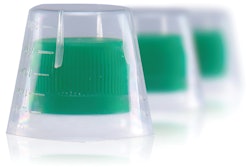
There, there, OTC, you’re special, too. OTC drugs have their own separate regulatory regime, with many unique charms, and it’s successfully chugged along essentially the same way for decades. In fact, the FDA has started paying extra special attention to you. Whether that attention will be welcome remains to be seen, however.
First, some context. Here’s an oversimplified but basically accurate summary of how FDA regulates drugs: In a nutshell, if you want to make a drug that’s not generally recognized to be (1) safe and (2) effective for the use you want to put it to, it’s a “new drug” that requires approval by FDA before you hit the market. If it’s the first of its kind, that approval typically requires clinical trials, the expensive, years-long effort you often hear about. If instead the product is copying a first-of-its-kind drug and has the same active ingredient, you’ll only have to prove it’s the equivalent of the first one.
Now, what if the drug product you want to package is in fact generally recognized to be both safe and effective for your intended use? Such drugs are defined as not “new drugs,” and they don’t require prior FDA approval before you hit the market with them. So even though a particular company’s version of a drug might be new, it’s not “new” under the law. The packager’s product is still regulated in a variety of important ways, most notably labeling, manufacturing, and reporting serious adverse reactions. But that specific product is not a “new drug.”
As it turns out, a lot of drugs meet this description. Most of the more than 300,000 over-the-counter drugs, including common cough and cold medicines, pain relievers, antacids, and many others, have been declared by FDA to be just so: generally recognized by experts to be both safe and effective for some specific intended uses, so that they are defined by law and regulations as not being “new drugs.” The whole program is referred to as the OTC Drug Review. The regulations about OTCs are called “monographs,” and they include the permitted active ingredients and dosages for different drug intended uses, along with required label information and other details. (Some new OTC drugs require new drug approval, and some started out as prescription drugs then got switched to OTC.)
When discussing drugs and new drug approval, it’s easy to gloss over phrases like “approved for its intended use,” or “safe and effective for its intended use,” but in many senses that’s the whole regulatory ball game. That’s because drugs are defined in the law as articles that are “intended” to have an effect on diseases, other health-related conditions, or the structure or function of the body. Therefore, you always want to figure out what a product’s intended use is, usually from reading its package labeling. It’s like magic, but it’s a crucially important legal concept: Change a product’s intended use by changing the labeling, and you could change an approved drug into an unapproved drug.
Anyway, this monograph framework has been in place since the 1970s or so. Though important changes have been made along the way to the new drug approval process, the monograph system has controlled these products since then. Now, says FDA, they are thinking of upsetting that particular apple cart.
FDA started this new reevaluation with a hearing on the topic in late March. FDA said it wanted to hear which aspects of the OTC Drug Review worked well and which didn’t. The agency also asked how it could be changed to improve regulation by, for example, more quickly addressing safety issues, or whether new drug clearance could be approached differently. FDA acknowledges that some monographs never got finished and have just lingered in “tentative final” status for years, sometimes decades, with FDA generally not taking enforcement action against products that comply with the unfinished regulations.
FDA is especially concerned that because OTC monographs are regulations, making changes to them requires it to follow the slow and time-consuming rulemaking process. As a result, for example, new safety concerns may pop up, but FDA can’t quickly change the labeling requirements for an OTC drug. Also, adding a new ingredient to a monograph would be a lengthy process.
The industry trade group, the Consumer Healthcare Products Association, represents the makers of more than 90 percent of OTCs in the US. The group issued a press release about the hearing in which it called the current monograph system “demonstrably effective” and “sensible,” and said that it has “served the public well for more than four decades.”
The group said it would support finalizing any monographs, wants that process to be more transparent, and urged FDA to take those steps it could without changing its regulations, such as to “exercise enforcement discretion (that is, to back off) to allow new/updated information to be added to product labels,” rather than insisting that such changes first be made part of the monograph.
The unique OTC drug regulatory setup has allowed consumers access to thousands of safe and effective remedies, and permits new packagers to dive into the business with relative ease. Whatever changes FDA makes should strive to preserve those benefits.
Eric Greenberg can be reached at [email protected], and visit his firm’s Web site at www.ericfgreenbergpc.com.


























